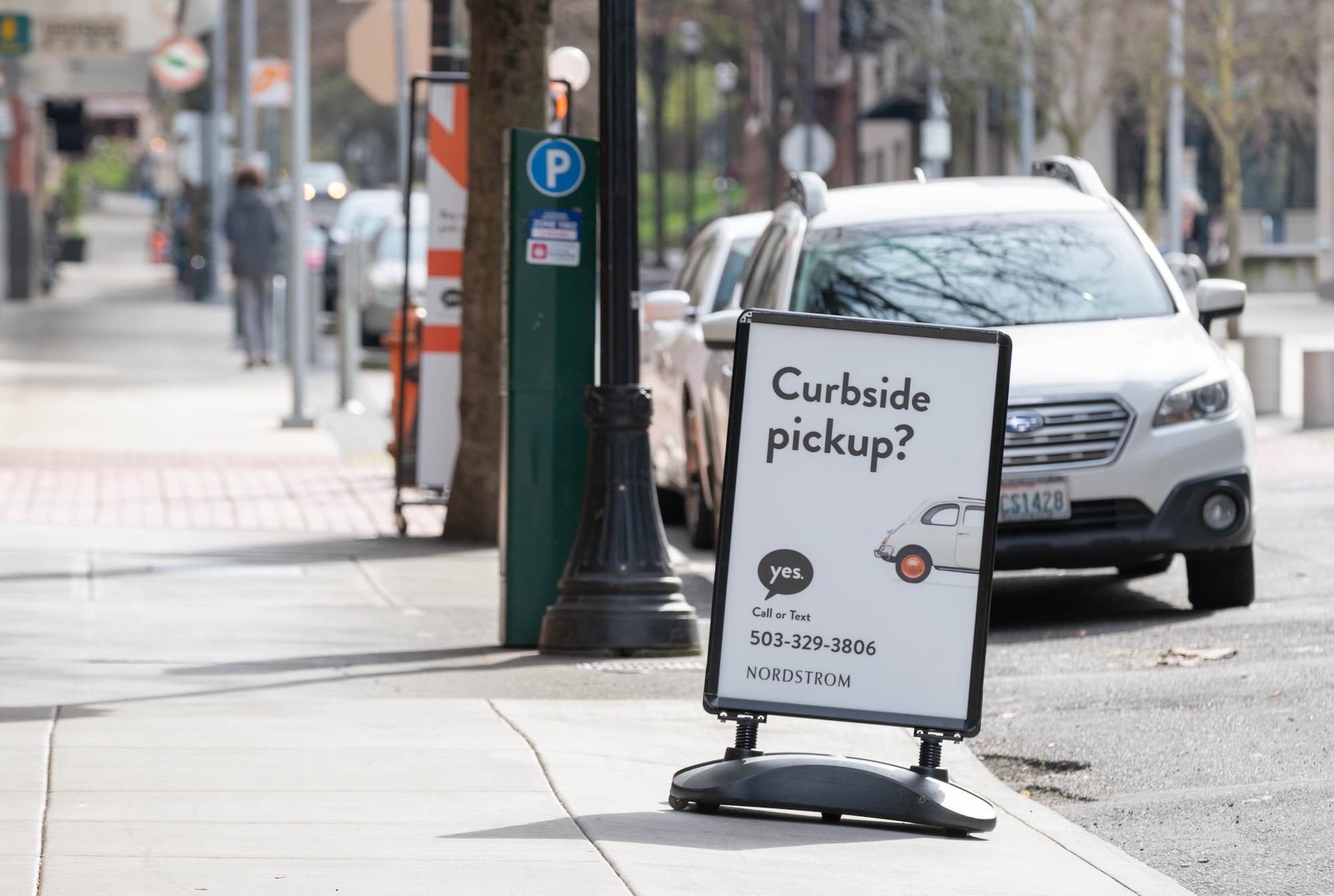The COVID-19 pandemic has drastically changed the retail landscape. Stores have been forced to close, consumers are more hesitant to shop in the ones that are left, and eCommerce is exploding.
As of August, eCommerce growth was up 259% year over year. For some retailers, as many as 50% of those online orders were picked up via BOPIS at a local store.
BOPIS (buy online, pickup in-store) has grown steadily over the past decade. It combines the efficiency of online shopping with the immediacy of buying an item in-store. But few retailers have managed to get it completely right. Most BOPIS processes have kinks and ultimately deliver poor experiences. And yet, consumer demand for local pickup hasn’t slowed. It’s only accelerated during the new COVID environment, with “curbside pick up” offering a no-contact BOPIS option. Just look at the latest Google Trends data for “curbside pickup”:
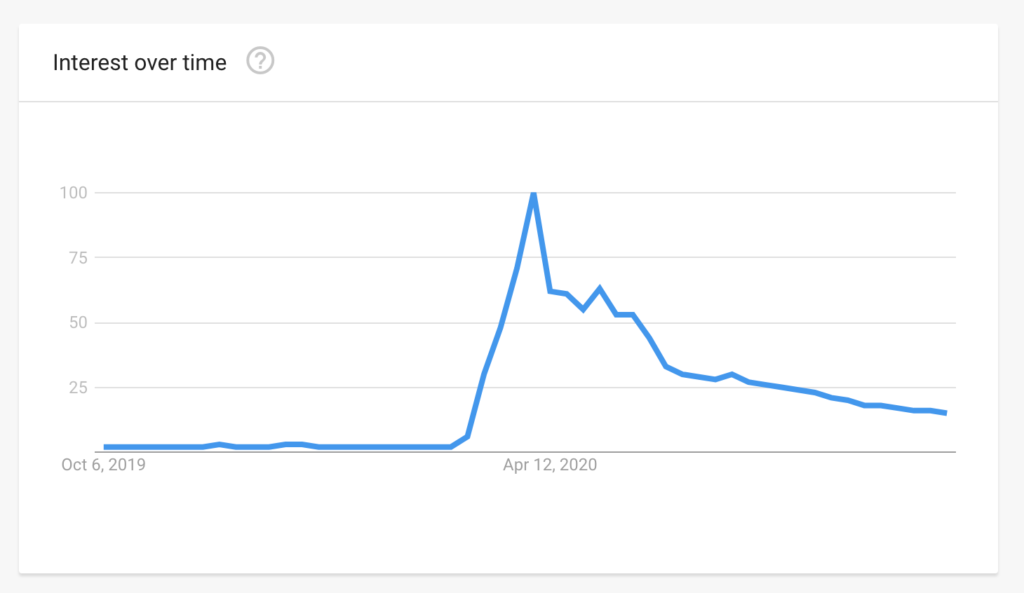
Why the sudden surge in popularity for curbside pickup?
Two words: turnaround times. Assuming a product is in-stock, customers can often pick it up the same day they place the order — or faster. Major retailers like Best Buy, Staples, and Apple offer pickup times as short as 1 to 2 hours. That near-instant gratification makes it even better than buying online.
The no-contact nature of curbside pickup has only made BOPIS more attractive to customers. As everyone shifted to online shopping during the pandemic, shipping times suffered. The demand for eCommerce has grown by so much — and with such speed — that carriers simply haven’t been able to keep up. Even Amazon Prime has had difficulty meeting their 2-day shipping times.
What’s the solution for shoppers who can’t wait? Bypass longer shipping times completely and go to the store. Over half (55%) of consumers anticipate making more holiday purchases via curbside pickup this year, according to our consumer survey of 5,383 shoppers. In fact, two-thirds of shoppers said curbside or in-store pickup would make them feel most comfortable shopping in-store during the 2020 holiday season. According to a survey from Adobe, 30% of online buyers actually prefer curbside pickup or BOPIS to traditional home delivery.
3 elements for successful curbside pickup
Create frictionless curbside experiences and you could lock these customers in for life. But what does a great curbside pickup experience look like? There are three key elements:
- Intuitive online shopping experience.
How easy is it for your customers to shop for curbside pickup?
- Frequent order updates and communication.
How well do you communicate to customers when their order is ready, and where they can pick it up?
- Foolproof fulfillment and pickup process.
How seamless is the pickup process once customers arrive to pick up their order?
Nail all three, and you’ll have your customers singing your praises. Let’s break down the process.
1. Designing an Intuitive Online Shopping Experience
What makes curbside pickup attractive is its ease and expediency. That seamless experience needs to begin on your website, as customers are browsing for items and adding them to their cart.
Highlight curbside pickup throughout your website.
As customers browse, they should be able to see at-a-glance whether a product is available in the store nearest them. Clearly communicate which products are available for curbside pickup.
Bonus points if you can highlight the value of BOPIS at the same time, like Best Buy does. The very first filter on their category page is for curbside pickup, with a special call out of “Get it fast.” Shoppers can check the box to “Pick up today.” They’re also transparent, making it easy for the customer to identify which items are available for store pickup and which are not. In the case that they do not have the item available at your local store that day, they’ll provide an estimate of when items can be picked up at a later date.
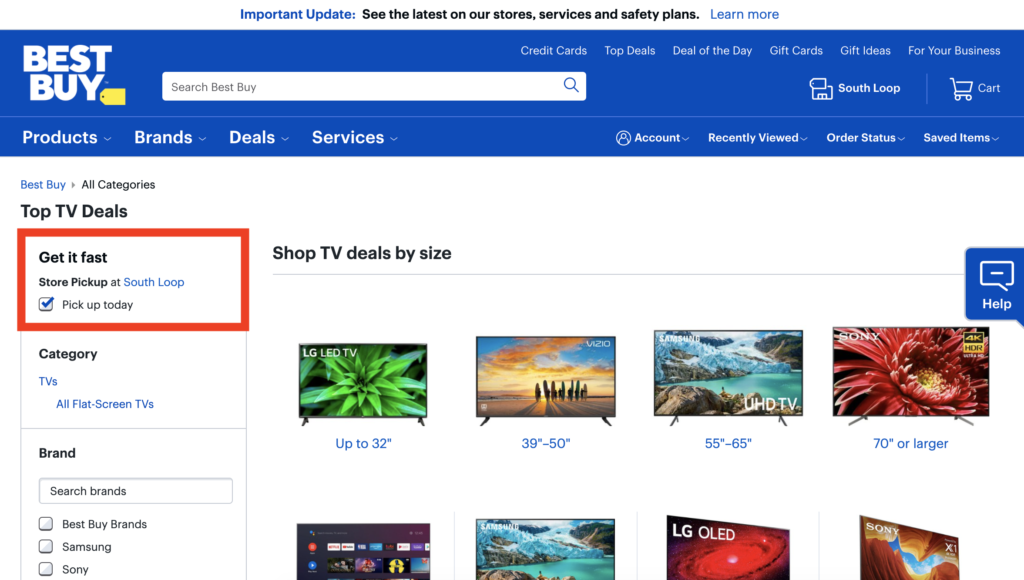
Best Buy emphasizes the speed of curbside pickup again on the product page. If customers want their product today, they can get it in as little as 1 hour. Talk about convenient.
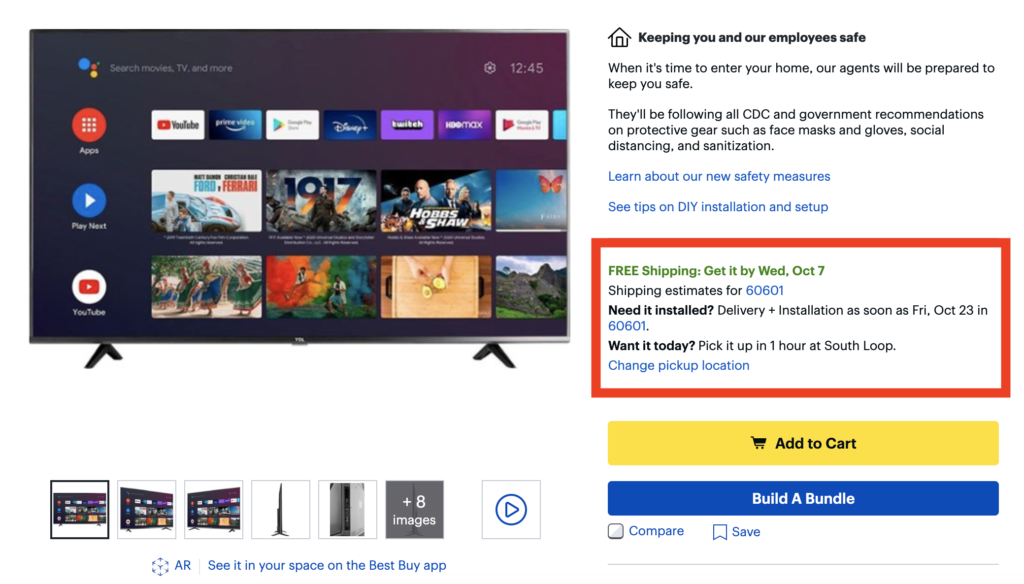
Set clear expectations.
Make sure that fulfillment times are communicated throughout the browsing and purchasing experience.
Customers choose curbside pickup because of its immediacy and convenience, so they need a time frame they can rely on. Should they plan on picking up their order during the workday, or can they do it before they start making dinner?
Be as explicit as possible. “Typically ready within 2 hours” is more informative than “same day pickup.”
Meet those expectations.
Let’s say you’re like Best Buy. For same-day pickup items, they promise a 1-hour pickup window regardless of product.
If you’re going to make a promise like that one, you need to meet it. Carefully consider what your in-store teams are actually able to commit to during this time. It’s possible you’ve scaled back your staff in-store, and now they’re responsible for more than they were pre-COVID.
It’s critical that you understand their capacity, and realistically evaluate whether they can commit to a shorter window. Should you offer a longer window, or hire more staff? Get the balance right so you can meet your SLA.
Ensure accurate inventory.
Your inventory must be updated in real-time, so that customers cannot purchase something for pickup that isn’t actually available in that store. No one wants to show up for their curbside pickup and discover their product is nowhere to be found.
Staples goes an extra step and displays how many of an item they have in-stock, increasing customer confidence in their ability to fulfill an order.
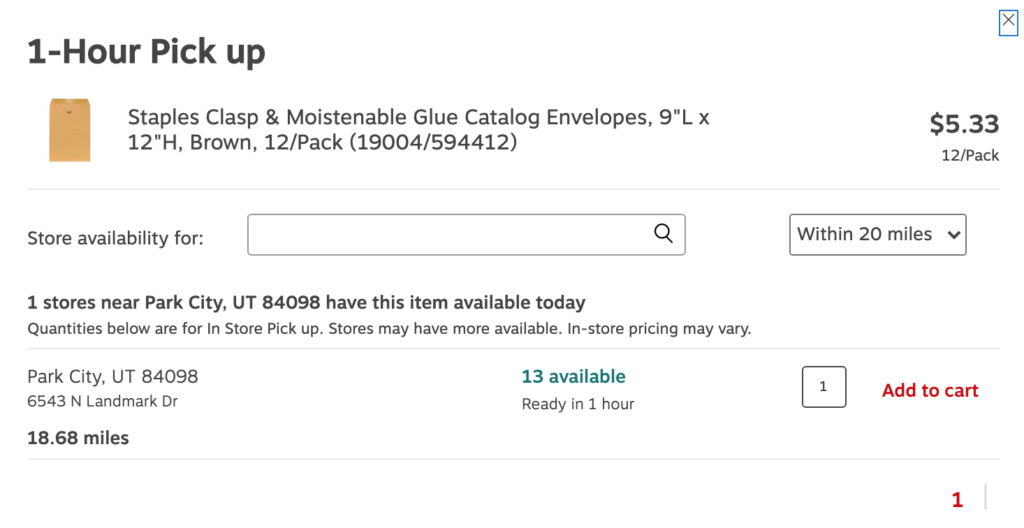
2. From Cart to Curbside: Communicate, Communicate, Communicate
Once shoppers complete checkout, they’re relying on you to regularly update them on their order status, so they know when to pick it up. Curbside pickup is still relatively new to many shoppers, so it’s better to over-communicate than under.
Set up your email series.
Emails should be automatically sent as a customer’s order progresses through fulfillment.
At a minimum, customers expect that they’ll receive an order confirmation email and an “Your item is ready for pickup” email. Go the extra mile with additional status updates and confirmation of pickup emails.
Remind customers what they can expect.
Take every opportunity to remind customers when they can expect their order to be ready, how you will notify them, and what they need to do upon arrival to pick up their order.
This communication begins on your website. For example, if an item isn’t available at a selected store, Target suggests the closest available option. Target also gives customers a quick idea of where and when, specifically, they’ll be able to pick it up: “tomorrow inside the store.”
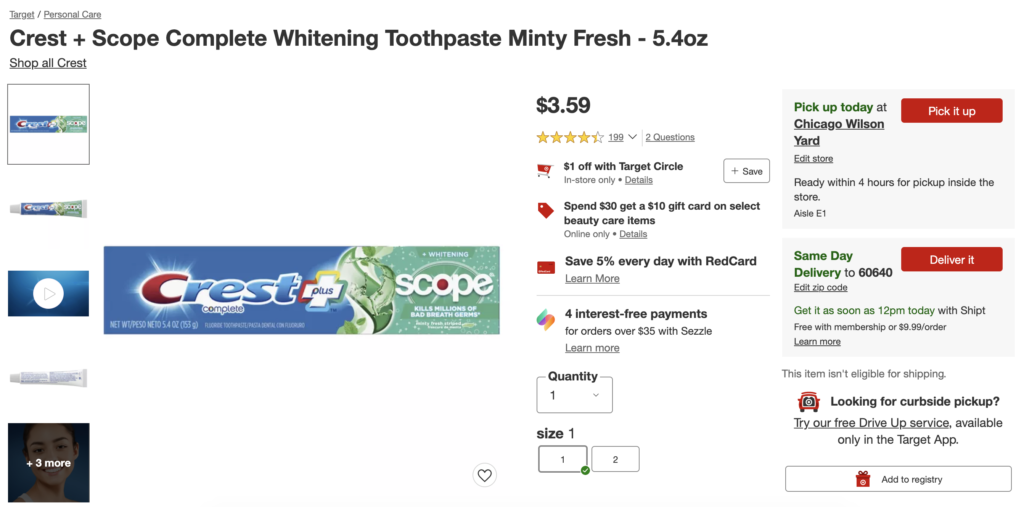
Once a customer places their order, you should remain in regular contact with them until they pick up their order. Email notifications are table stakes at this point, but many customers prefer the option to also receive SMS notifications for more real-time updates. Let the customer choose which notification method they prefer for a great experience.
Outline the curbside pickup process.
Tell customers exactly what they need to be able to drive off with their purchase. Do they need their ID and credit card, or is an order number sufficient?
Offer directions on where customers should go to pick up their item when they arrive. Are there dedicated parking spaces in your lot, or do they need to go inside to a special pickup counter? Be sure to address other concerns about in-store shopping during the pandemic, like required face coverings and updated cleaning processes. For example, Target has an entire landing page dedicated to their curbside pickup process, which emphasizes key aspects that appeal to those shopping during COVID:
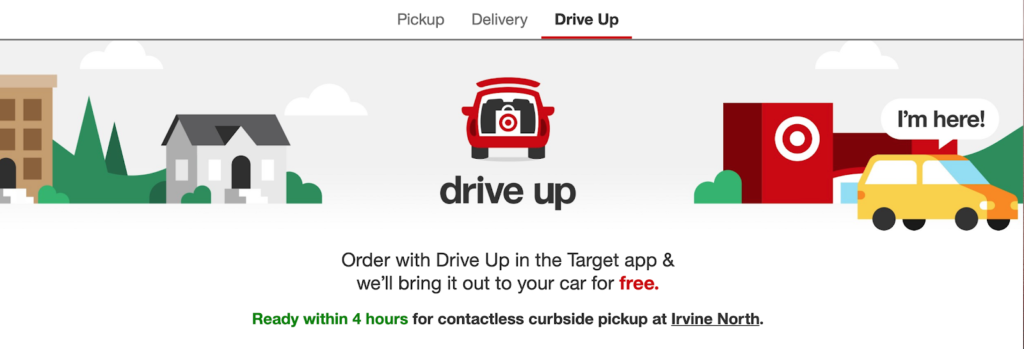
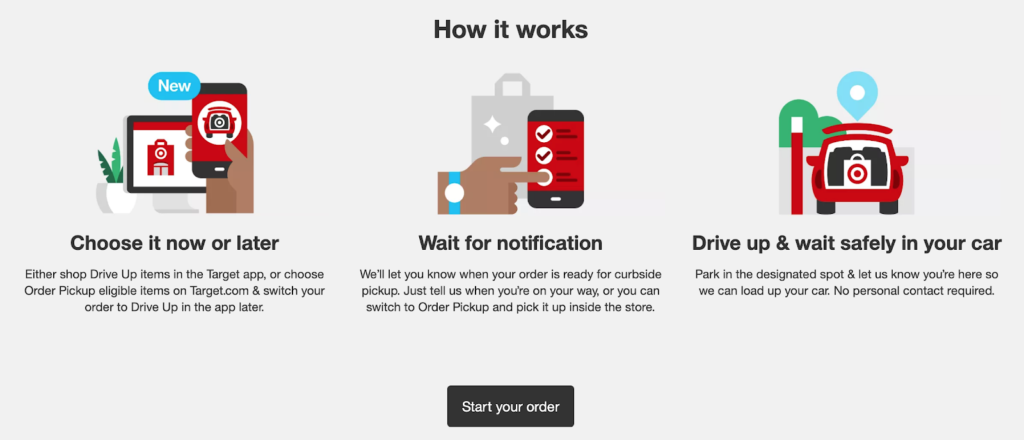
3. Preparing Your Store for Curbside Pickup
Finally, you need to prepare your store and your staff for fulfilling curbside pickup orders.
Develop staff guidelines.
How do you make sure each curbside order is in-stock, packed, and tied up with a metaphorical bow for each customer? You’ll need to determine:
- Who will be responsible for packing curbside pick up items? Will you have dedicated staff or cross-train?
- How will staff be alerted that an order has come in? What are their next steps? Define the process for gathering items, packaging them, and completing orders.
- How will you ensure the right orders go to the right customers? Outline requirements for validating both the customer’s identity and the products so the customer doesn’t have to come back.
- How can you anticipate incoming order volume while balancing the needs of in-store customers? Don’t let a busy store impact the curbside customer’s experience.
- Will you provide a way for shoppers to modify their orders after they complete checkout? Determine timeframes and product limits.
Have a back-up plan.
There are going to be times when your curbside fulfillment team is running behind. When this happens, you want to be ready.
Think out your communication plan now so you can dynamically react to a backup in orders if you are over capacity. Your goal is to adjust customers’ fulfillment expectations as soon as possible. Will you send an email alerting customers to a delay with their pickup order?
You can also add a banner to your website, so shoppers are aware of potential delays before they even place their order. For example, Home Depot notifies customers during checkout that their pickup window may be delayed:
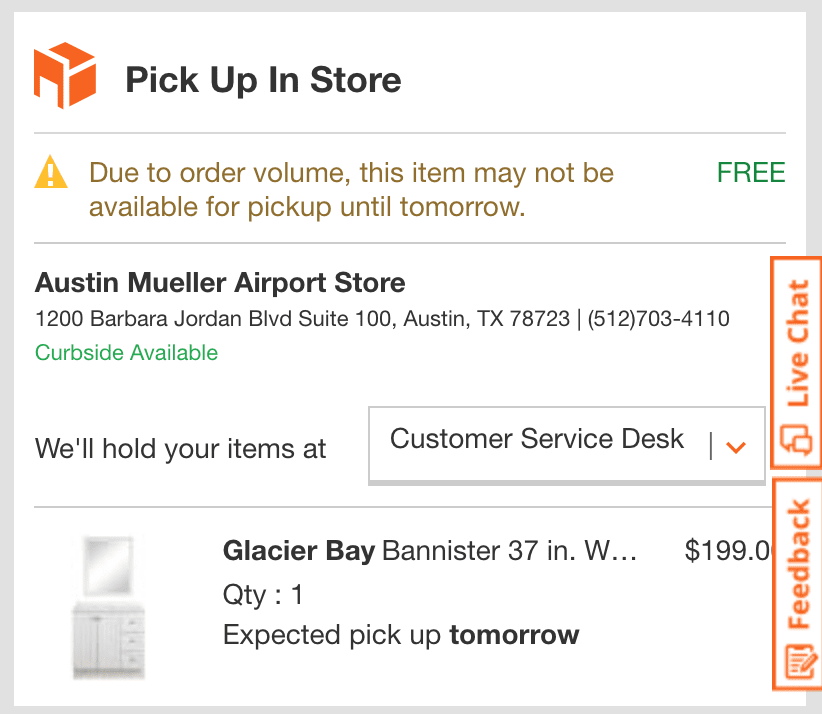
Allocate space and signage.
Make sure signage is clear, so that there’s no question for customers of where they should go and what they should do upon arrival.
Will you have dedicated parking spaces, or do you need to print signage directing customers toward a pickup counter inside? Be thoughtful that your curbside pickup process may operate differently depending on location. A store located in an urban crowded area will have different needs than one in a suburban area with a huge parking lot.
Set up a dedicated place inside your store to handle online orders so that curbside customers don’t need to be commingled with regular customers during peak time. Again, you don’t want their experience to suffer if things are busy.
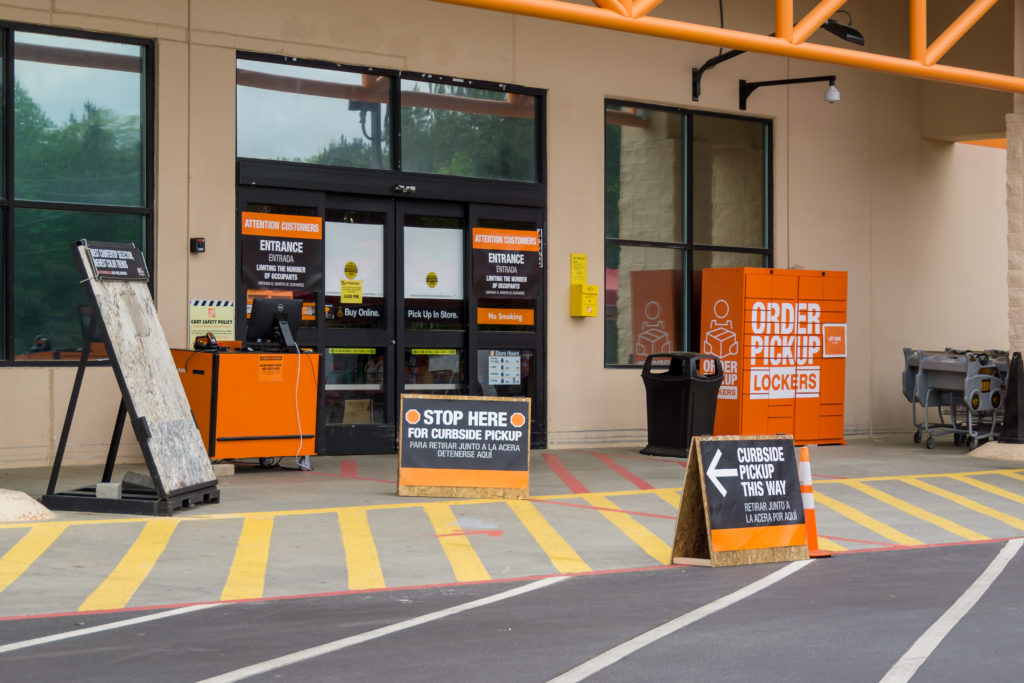
Curbside Pickup and Your Store
In large part, the success of your curbside pickup hinges on how well you meet the expectations you set with your customers. But customer expectations for curbside pickup aren’t just based on their last experience with you. It’s about their last retail experience, period.
If they just had a really great, smooth experience with curbside pickup elsewhere — regardless of whether it was with a competitor or a business in a completely different vertical — they’re now going to expect the same smooth experience with you, because they know it can be done.
And it can be. With these tips, you’ll be set for success.
Interested to know how your curbside experience measured up? Ask your customers for their feedback.

